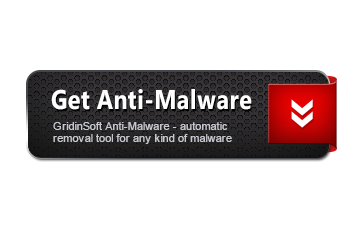The Trojan.ConvagentPMF.S27914283 is considered dangerous by lots of security experts. When this infection is active, you may notice unwanted processes in Task Manager list. In this case, it is adviced to scan your computer with GridinSoft Anti-Malware.

Gridinsoft Anti-Malware
Removing PC viruses manually may take hours and may damage your PC in the process. We recommend using GridinSoft Anti-Malware for virus removal. Allows to complete scan and cure your PC during the trial period.
What Trojan.ConvagentPMF.S27914283 virus can do?
- Behavioural detection: Executable code extraction – unpacking
- Executed a command line with /C or /R argument to terminate command shell on completion which can be used to hide execution
- Yara rule detections observed from a process memory dump/dropped files/CAPE
- Reads data out of its own binary image
- CAPE extracted potentially suspicious content
- Unconventionial language used in binary resources: Uzbek (Latin)
- Authenticode signature is invalid
- Uses Windows utilities for basic functionality
- CAPE detected the Tofsee malware family
- Deletes executed files from disk
- Anomalous binary characteristics
- Uses suspicious command line tools or Windows utilities
How to determine Trojan.ConvagentPMF.S27914283?
File Info:
name: D7E3CFC864CB9825F1D1.mlwpath: /opt/CAPEv2/storage/binaries/0bc5fa594fb4910fce7eedf44156443e0636d5ba5bdf431c6fe118553a8b4ed7crc32: BB4936BEmd5: d7e3cfc864cb9825f1d12cfc957350e1sha1: 4600a84c68e6e5b85af77e4514fb0a2b99923209sha256: 0bc5fa594fb4910fce7eedf44156443e0636d5ba5bdf431c6fe118553a8b4ed7sha512: 22fd364c5e794ad6212719ea7b47c46b8a5b84fc02fde509724c6b0ce09260b7f30763112579ca8c871c3fbc236c23524d023992f54e11d8452815de70f1d500ssdeep: 49152:h1Aoooooooooooooooooooooooooooooooooooooooooooooooooooooooooooo4:type: PE32 executable (GUI) Intel 80386, for MS Windowstlsh: T120B639C037B5E84ED2326975B82596B65626FCE2E825178B36477F0FB8312419ECDB03sha3_384: f82ca7b52bec55c95a2fcaeb600313d4074974f298ee0f49288f5de2d7fa7c99e3f1644ec70ed0730d4149b7bdfb068fep_bytes: 8bff558bece8668a0000e8110000005dtimestamp: 2021-02-01 08:35:01Version Info:
Translations: 0x0798 0x02be
Trojan.ConvagentPMF.S27914283 also known as:
| tehtris | Generic.Malware |
| DrWeb | Trojan.PWS.Stealer.32991 |
| MicroWorld-eScan | Trojan.GenericKDZ.87168 |
| FireEye | Generic.mg.d7e3cfc864cb9825 |
| CAT-QuickHeal | Trojan.ConvagentPMF.S27914283 |
| ALYac | Trojan.GenericKDZ.87168 |
| Cylance | Unsafe |
| VIPRE | Trojan.GenericKDZ.87168 |
| Sangfor | Trojan.Win32.Save.a |
| K7AntiVirus | Riskware ( 00584baa1 ) |
| K7GW | Riskware ( 00584baa1 ) |
| CrowdStrike | win/malicious_confidence_100% (W) |
| Cyren | W32/Kryptik.GKO.gen!Eldorado |
| Symantec | ML.Attribute.HighConfidence |
| Elastic | malicious (high confidence) |
| ESET-NOD32 | a variant of Win32/Kryptik.HPLK |
| APEX | Malicious |
| TrendMicro-HouseCall | Mal_Tofsee |
| ClamAV | Win.Packed.Filerepmalware-9947507-0 |
| Kaspersky | HEUR:Backdoor.Win32.Gulpix.gen |
| BitDefender | Trojan.GenericKDZ.87168 |
| NANO-Antivirus | Trojan.Win32.Tofsee.jqdhmj |
| Avast | Win32:AceCrypter-W [Cryp] |
| Rising | Trojan.Kryptik!1.DE4C (CLASSIC) |
| Ad-Aware | Trojan.GenericKDZ.87168 |
| Sophos | ML/PE-A + Troj/Krypt-FV |
| Zillya | Trojan.Kryptik.Win32.3748484 |
| TrendMicro | Mal_Tofsee |
| McAfee-GW-Edition | BehavesLike.Win32.Worm.vm |
| Trapmine | malicious.high.ml.score |
| Emsisoft | Trojan.GenericKDZ.87168 (B) |
| SentinelOne | Static AI – Malicious PE |
| GData | Win32.Trojan.PSE.10N1HEV |
| Jiangmin | Backdoor.Gulpix.abf |
| Detected | |
| Avira | HEUR/AGEN.1249141 |
| Antiy-AVL | Trojan/Generic.ASMalwS.18EA |
| Microsoft | Ransom:Win32/StopCrypt.PMA!MTB |
| Cynet | Malicious (score: 100) |
| AhnLab-V3 | Trojan/Win.MalPE.R488344 |
| Acronis | suspicious |
| McAfee | Packed-GEE!D7E3CFC864CB |
| MAX | malware (ai score=87) |
| VBA32 | TrojanSpy.Stealer |
| Malwarebytes | Trojan.MalPack.GS |
| Tencent | Backdoor.Win32.Mokes.ha |
| MaxSecure | Trojan.Malware.300983.susgen |
| AVG | Win32:AceCrypter-W [Cryp] |
| Cybereason | malicious.c68e6e |
| Panda | Trj/GdSda.A |
How to remove Trojan.ConvagentPMF.S27914283?
- Download and install GridinSoft Anti-Malware.
- Open GridinSoft Anti-Malware and perform a “Standard scan“.
- “Move to quarantine” all items.
- Open “Tools” tab – Press “Reset Browser Settings“.
- Select proper browser and options – Click “Reset”.
- Restart your computer.



Leave a Comment